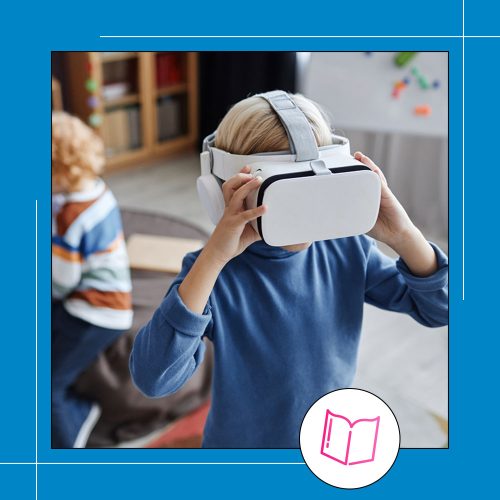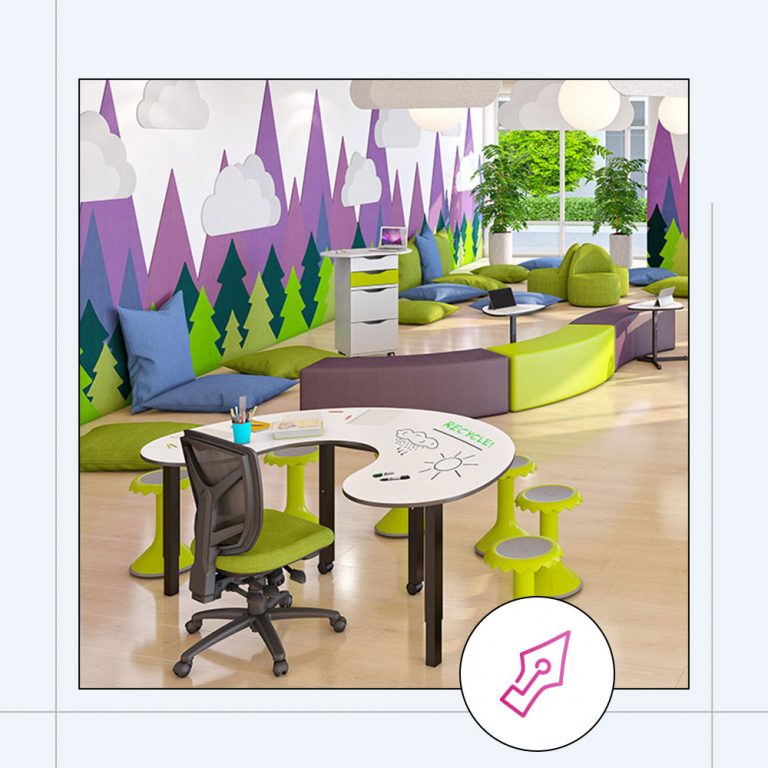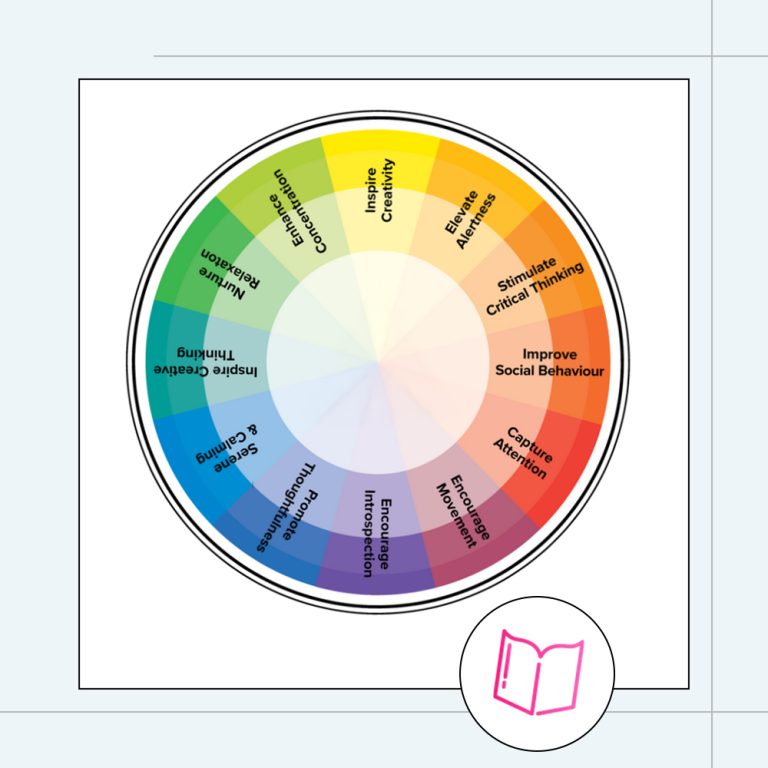Educators are constantly searching for the best ways to engage students, transfer knowledge and prepare bright, creative minds to tackle the challenges of the world.
We are discovering new and innovative ways to learn and conditions for this to take place from a psychological, social and physical perspective. From these discoveries new trends are emerging that influence how, what and where we educate children and young people.
Here’s BFX’s take on the top trends for 2023 that educators should pay attention to.
1. Natural colours, sustainable materials and building design.
While not entirely a new trend, colours and materials that evoke the natural environment are high on the list for school designers in 2023. When budgets are tight, painting the walls and adding new finishings can be an economical solution when learning spaces are due for a revamp.
The emphasis is on balancing colours that promote a sense of calm and connection with those that stimulate creativity and engagement. The Ecological Valance Theory by Palmer and Schloss proposes that people are usually attracted to colours that evoke positive emotions.
Earthy colours dovetail neatly into the trend for biophilic design: the design of furniture, school spaces and buildings with lines, curves and forms found in nature, prioritising natural sustainable materials like wood and making plants and gardens integral to the building’s exterior and interior design. We’ve covered it in more depth here for offices, however for learning environments, blending the indoor and outdoor learning environments through biophilic design is an important way to balance the focus on technology with nature inspired environments that improve memory and attention, fight concentration fatigue, and offer opportunities for social and emotional learning. This is possible through large window-seats, courtyards, operable walls, and vertical gardens. It’s become particularly vital for vertical schools where access to the outdoors and natural environments is severely limited.
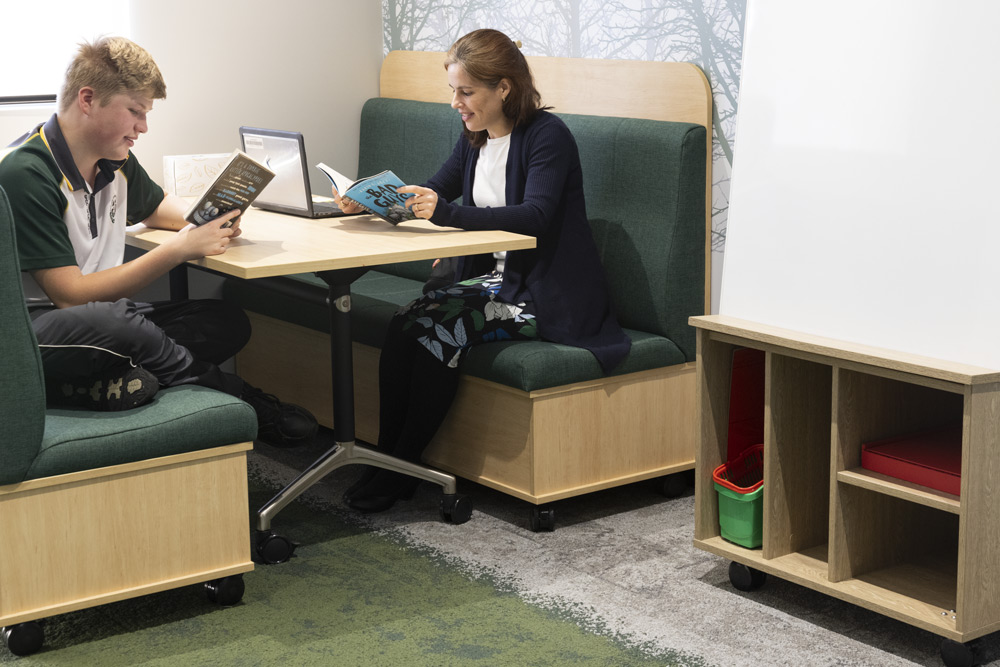
2. Technology enhanced learning
Technology continues to play an increased importance in our everyday lives. Digital modes of learning were thrust into prominence in 2020 out of sheer necessity, and despite returning to the classroom, their effectiveness for many students means that they continue to play a significant role in teaching.
Student-centered learning using technology is a big trend going into 2023. E-learning platforms enable teachers to offer students personalised learning journeys that allow them to learn at their own pace and skill level with instructional or educational video content and online self-paced activities. The data gained from digital learning platforms can help teachers find the right balance of targeted in-class teaching and online activities to help students develop holistically.
Flipped-classroom learning is also becoming popular. This is where students learn concepts at home using videos and activities on an e-learning platform before consolidating their learning at school with hands-on activities. Innovative, data-driven tools are being developed to support this learning mode with learning content and assessments that are engaging, accessible and inclusive.
A growing area that will provide big benefits for students is Virtual Reality. Imagine virtually visiting Ancient Greece? Or practicing repairing machinery without leaving the classroom? These experiences are now possible for students as virtual reality (VR), augmented reality (AR) and mixed reality (MR) are set to take off in 2023. This technology can offer ways to share information and impart knowledge in more immersive, engaging ways than traditional lectures or textbooks.
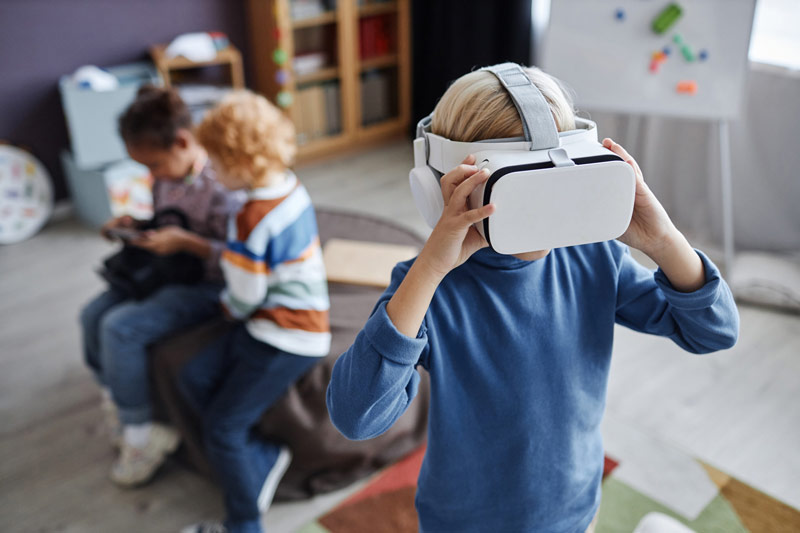
3. Soft skills training as part of social and emotional learning
Soft skills are an essential part of improving a students ability to work with others and provides them invaluable knowledge to take into their future careers.
In 2023, we will see a greater emphasis being placed on explicit teaching of soft skills such as communication, listening, resilience, stress management, analytical thinking, leadership, negotiation and working with others.
This will be supported by a greater emphasis on creating spaces for wellbeing including wellness and calming rooms, using flexible seating that supports collaborative working in groups of varying sizes and using outdoor learning spaces that are more conducive to emotional wellbeing (see the section on Continuing Trends below for details).
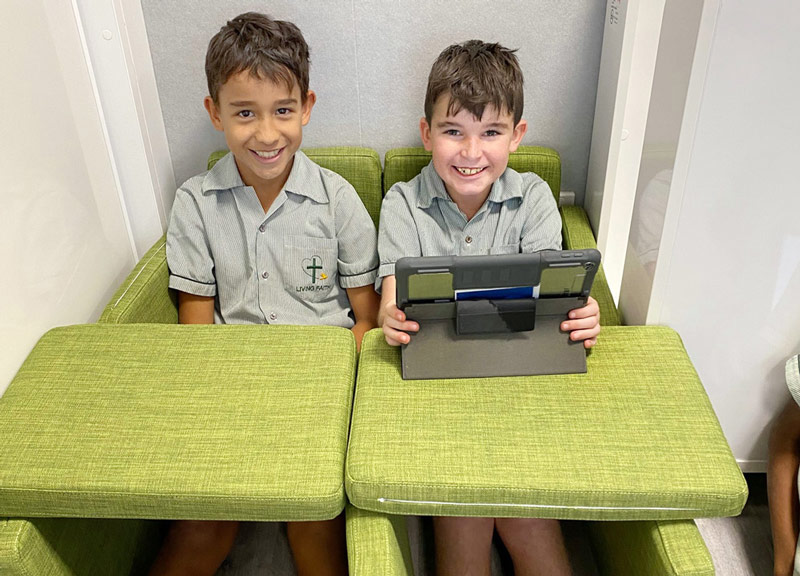
4. Nano Learning or Micro Learning
Long lectures and drawn-out assessments are giving way to nano- or micro-learning, where smaller ‘bite-sized’ lessons deliver targeted, easily digestible chunks of information.
Using shorter lessons (two to ten minutes long) over a longer time period to cover a unit of work has been found to help learners retain more information, particularly when combined with quizzes or assessment straight after the session.
Rather than being a replacement for traditional teaching methods, in schools nano learning will act as a supplement when teaching simple concepts.
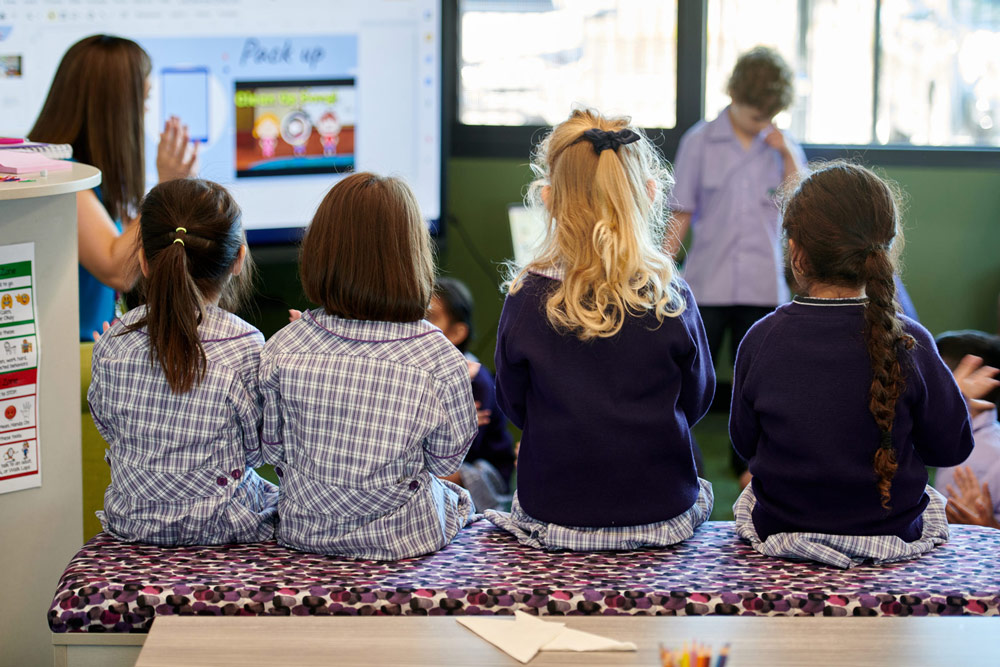
5. Inclusive Education
Today’s education environments need to cater for all student. Those with varying linguistic and socio-economic backgrounds and those who are differently abled, just to name a few. Every child should have the opportunity to learn in a supportive, inclusive environment.
For a child with special needs to be available for learning they first need to have their additional physical, emotional, and sensory needs met. There are multiple ways to achieve this, but one important supporting factor is furniture.
For example, some children, particularly certain kids with special needs have predispositions toward low muscle tone and poor core strength.
It can take a great deal of effort for them to sit-up straight on the carpet, or at a desk in an unsupported position for a length of time. Choosing appropriate supportive seating is really important in managing these postural needs.
Continuing trends:
In addition to the top trends above, there are several enduring concepts that will continue to influence learning and school design in 2023.
- Centralised resource centres or hubs for greater connectivity where students can collaborate and problem-solve together. These resource centres incorporate traditional library facilities with exhibition spaces, technology-enabled work spaces with 3D printers, VR, and design stations, and small and large group working spaces.
- Vertical schools which make the most of smaller, inner-city blocks or existing office blocks to create new schools that work in harmony with the community.
- Blending outdoor and indoor learning environments to increase cognitive performance, connection with the environment and opportunities for hands-on activities that require social interaction (we’ve talked about this more here). A greater emphasis on outdoor learning will require schools to look at how they can use existing spaces, and combine light-weight, movable furniture with permanent outdoor furniture that has weather-resistant finishes.
- Flexible spaces and furniture to suit active learning, open floor plans and multi-purpose spaces. Greater learning autonomy can be achieved by giving students a choice of ergonomic furniture and the ability to arrange their space to suit either independent or group work, whether that’s modular desks, beanbags, pods, wobble stools, height-adjustable desks or ottomans with computer desks. However, this flexibility also calls for noise management using audio art and smart dividers (BFX has a great range for schools).
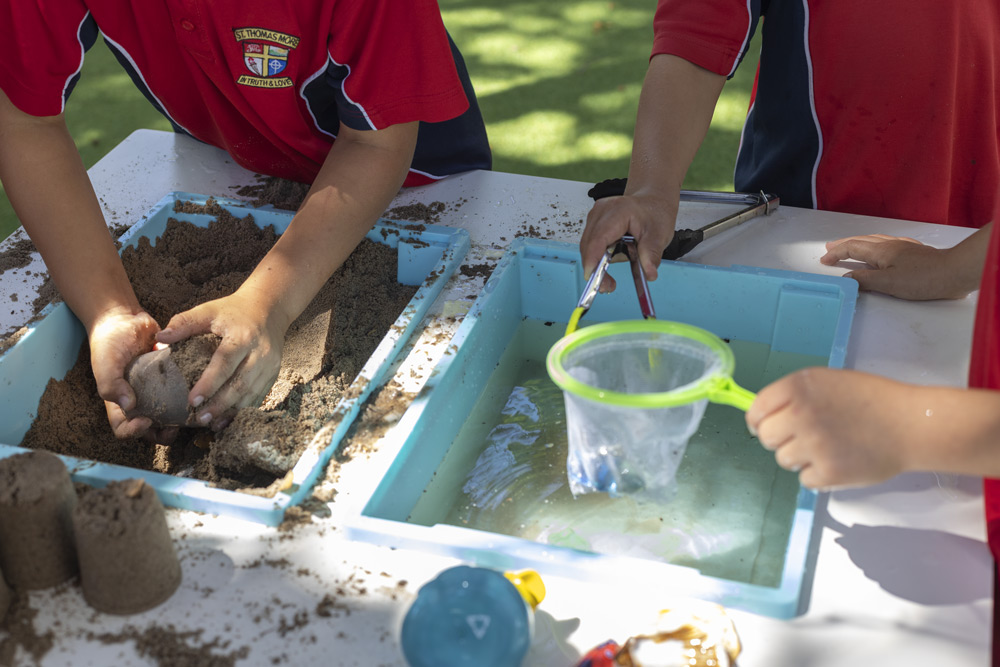
BFX can help you leverage education trends with the right environment
With decades of experience behind them, and a close relationship with schools around Australia, BFX’s Education Furniture Consultants are well placed to help you create a learning environment that helps students be comfortable, safe and engaged. Contact us today to discuss your school’s specific needs, we’d love to help.


